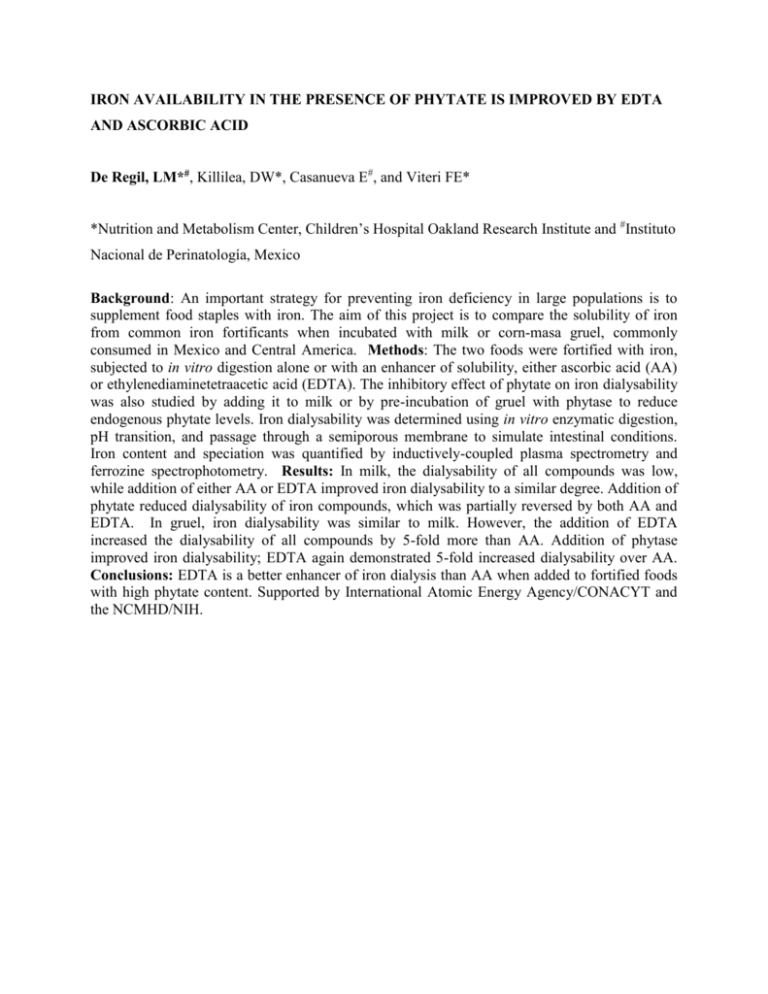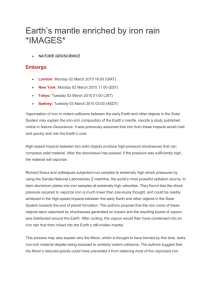Na2EDTA protects iron better against phytic acid than Ascorbic Acid
advertisement

IRON AVAILABILITY IN THE PRESENCE OF PHYTATE IS IMPROVED BY EDTA AND ASCORBIC ACID De Regil, LM*#, Killilea, DW*, Casanueva E#, and Viteri FE* *Nutrition and Metabolism Center, Children’s Hospital Oakland Research Institute and #Instituto Nacional de Perinatología, Mexico Background: An important strategy for preventing iron deficiency in large populations is to supplement food staples with iron. The aim of this project is to compare the solubility of iron from common iron fortificants when incubated with milk or corn-masa gruel, commonly consumed in Mexico and Central America. Methods: The two foods were fortified with iron, subjected to in vitro digestion alone or with an enhancer of solubility, either ascorbic acid (AA) or ethylenediaminetetraacetic acid (EDTA). The inhibitory effect of phytate on iron dialysability was also studied by adding it to milk or by pre-incubation of gruel with phytase to reduce endogenous phytate levels. Iron dialysability was determined using in vitro enzymatic digestion, pH transition, and passage through a semiporous membrane to simulate intestinal conditions. Iron content and speciation was quantified by inductively-coupled plasma spectrometry and ferrozine spectrophotometry. Results: In milk, the dialysability of all compounds was low, while addition of either AA or EDTA improved iron dialysability to a similar degree. Addition of phytate reduced dialysability of iron compounds, which was partially reversed by both AA and EDTA. In gruel, iron dialysability was similar to milk. However, the addition of EDTA increased the dialysability of all compounds by 5-fold more than AA. Addition of phytase improved iron dialysability; EDTA again demonstrated 5-fold increased dialysability over AA. Conclusions: EDTA is a better enhancer of iron dialysis than AA when added to fortified foods with high phytate content. Supported by International Atomic Energy Agency/CONACYT and the NCMHD/NIH.







